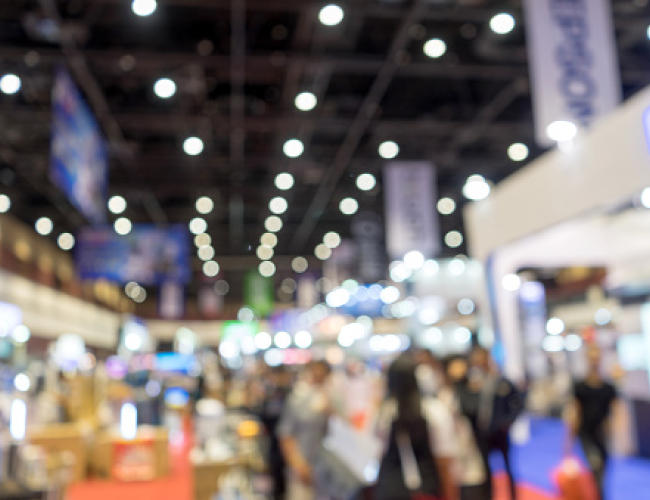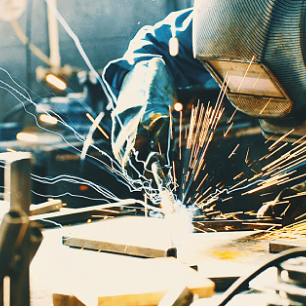Welding Digest
Jump to:
Five Things You Didn’t Know about the AWS A5 Committee
The AWS A5 Committee on Filler Metals and Allied Materials prepares specifications for arc welding electrodes, gas welding rods, and other filler metals, covering both ferrous and nonferrous materials. It is supported by 17 subcommittees and publishes more than 40 standards. Read more to learn five little-known facts about the committee’s work and volunteers.
1. The A5 Committee’s Roots Are More Than 80 Years Old
In 1935, the AWS-ASTM Joint Committee on Filler Metal was organized to provide standard specifications for welding rods, electrodes, filler metals, and fluxes for this developing U.S. industry. In 1940, the joint committee developed the first document of what would eventually become AWS A5.1, Specification for Carbon Steel Electrodes for Shielded Metal Arc Welding.
In 1969, these two organizations agreed to dissolve this joint activity and permit AWS to assume sole responsibility for the family of welding rods, electrodes, filler metal, and flux specifications then in existence (Ref. 1).
2. Members Come from Different Industries and Backgrounds
There are 30 voting members, two corresponding members, and 21 applicants in the A5 committee. Voting members consist of a balanced mix of producers, users, distributors, and general interests. No one interest category can be more than 50% of the committee, meaning that various industry segments are represented. In addition to having members with diverse professional backgrounds, the committee also connects people from around the world now that meetings are hybrid. There is global participation in the main committee and subcommittees, with members in countries such as Korea, Japan, Germany, India, and Canada. Members also span different ages, from 20s to 80s.
“People can be involved as long as they have interest and ability to contribute,” said A5 Committee Past Chair David Fink.
3. Committee Membership Comes with Benefits
According to A5 Committee Vice Chair Matthew Sinfield, an enjoyable part of being an A5 committee member is participating in its consensus process. “Working within a diverse group of industry experts to align and balance the needs of users and producers is fascinating,” he shared. “If data is needed to substantiate a requirement, the committee members will work together to form task groups to investigate, perform round-robin studies, or directly furnish the supporting information. This drives collaboration to obtain truths and underpins the community aspect of working on a committee.”
Working closely with a community of industry experts also offers another benefit: access to specialized knowledge.
“When I have a problem, I can pick up the phone and talk to someone because I have all of these experts I know who I wouldn’t know otherwise,” said A5 Immediate Past Chair Teresa Melfi. “It gives me a resource when I need an answer.”
4. The U.S. Navy Supports A5’s Work
The U.S. Navy has historically been a strong supporter of the A5 committee, and a number of its personnel have participated in the committee and subcommittees. Many of the military’s welding filler metal and fabrication documents either directly invoke or leverage parts of the A5 specifications, such as testing methods, commercial equivalent usage, ordering, and product form tolerances.
5. Participation Is Key
Not just anyone can become a voting member of the A5 committee. Applicants usually start in one of the subcommittees, where they must participate by attending meetings and reviewing ballots before they can become a member of the main A5 committee. “Active participation is the means to achieve voting member status,” said A5 Committee Member Jon Lee.
Although the A5 committee has the final say in what goes into standards, the development work starts in the subcommittees, where participants are passionate about what they do.
“The specifications are communally developed,” Melfi said. “Everyone comes into the meeting with their thoughts, and then we all come to a consensus. Applicants are often deeply involved in these discussions and encouraged to participate.”
Get Involved
The A5 committee is actively seeking participation from the interest categories of user, general interest, and distributor. If you want to learn more about the A5 committee or become a member, contact Kevin Bulger at kbulger@aws.org.
Reference
1. American Society of Mechanical Engineers. 2023. ASME Boiler and Pressure Vessel Code, Section II Materials, Part C — Specifications for Welding Rods, Electrodes, and Filler Metals, Preface xxxv.
The article was written by Alexandra Quinones (associate editor of the Welding Journal) and Cindy Weihl (Senior Editor of the Welding Journal) for the American Welding Society.


